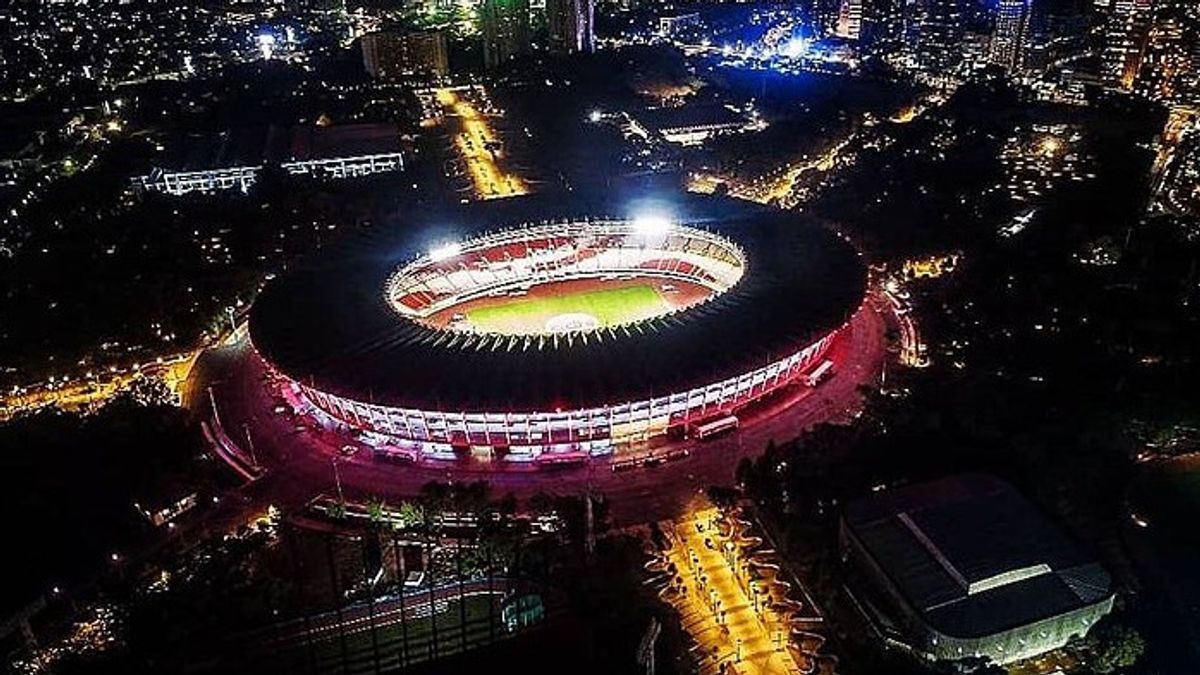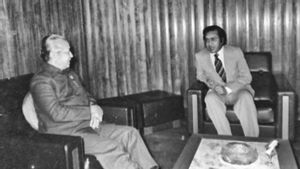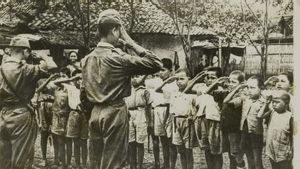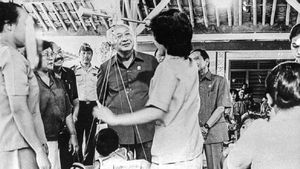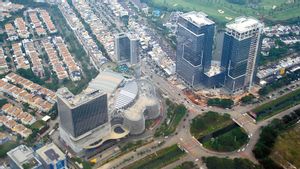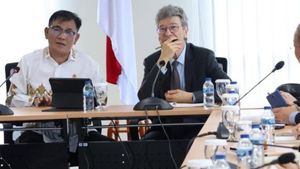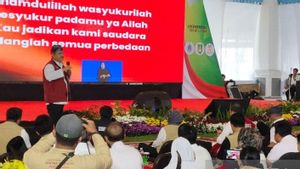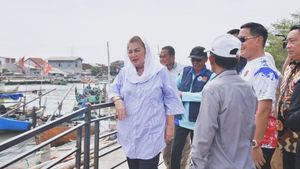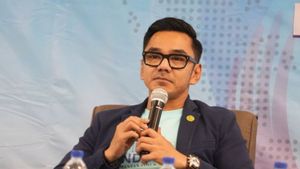JAKARTA - Soekarno's friendship with Nikita Khrushchev often bears sweet fruit. Soekarno supports the politics of the Soviet Union. Likewise, Nikita supports Indonesian politics. The closeness of the two country leaders is even seen in many historic moments.
The construction of the Gelora Bung Karno (GBK) sports complex, for example. Instead of the Soviet Union only appearing as a fund supporter, the Red Bear Country also brought in experts from the country. As a result, the presence of these foreign foremanes perfected the construction of the GBK.
Indonesian foreign politics is inflamed under the power of the Old Order. Soekarno's charismatic leadership is behind it. Bung Karno was able to become a friend of countries that exist in the world.
He was even able to act as anyone. From a friend to like the Ambassador (Ambassador). The Karisma made Bung Karno close to anyone. The Prime Minister of the Soviet Union, Nikita, let alone.
The figure of the Soviet Union views Soekarno as a great leader who must be supported. Vice versa. Soekarno is ready to support all kinds of political agendas belonging to Nikita. The closeness of the two can also be seen from the return of visits between the two leaders of the country.
Bung Karno visited the Soviet Union for 14 days in 1956. Nikita then replied to a visit by perpetuating a visit to Indonesia for almost two weeks. Those invitations resulted in many cooperation agreements.
An agreement that produces the symbiosis of mutualism between the two countries. The result was brilliant. Soekarno and Nikita's close relationship is often seen as a warm representation of the relationship between Indonesia and the Soviet Union.
This agreement further strengthens Indonesia's position as leader of the Non-Aligned Movement for Retaliatory Visits of three high-ranking Soviet Union officials to Indonesia, including Prime Minister Nikita Khrushchev in 1960, adding to the strong friendship between the two countries, the era of bilateral relations is also reflected in other areas.
"In 1962, the Soviet Union gave scholarships to Indonesian students. It was recorded that that year around 700 Indonesian students studied at various universities in the Red Bear Country. A number of Navy officers studied in Vladivostok and Leningrad. In addition, cooperation in the construction of the Cilegon steel factory, Friendship Hospital, GBK, and Farmer Statue, all proved how strong the cooperation between the two countries at that time was," said Tomi Lebang in the book Sahabat Lama, New Era: 60 Years of Installing Indonesian-Russia Relations (2010).
The support of the Soviet Union for Indonesia is present in all lines. Regarding development, for example. Nikita and the Soviet Union often support the infrastructure development agenda in Indonesia. Moreover, the matter of his friend's lighthouse project, Bung Karno.
Take for example when Indonesia has a plan to build the largest sports complex in Southeast Asia. Its name is Senayan Sports Complex, then known as Gelora Bung Karno. The development was deliberately perpetuated by Bung Karno to support the success of the IV Asian Games in 1962.
Soekarno is of the view that the presence of GBK will be monumental. This is because the splendor of the GBK is hailed to make other countries view Indonesia as a large nation. Even the business of funds was not an obstacle, the Soviet Union was willing to lend 12.5 million US dollars.
The construction of the GBK began in 1960. However, GBK's planning had been carried out in advance. Assistance from the Soviet Union then flooded Jakarta. Instead of being only assisted by funds, Nikita also imports her experts to Indonesia.
The presence of foreign foremanes was not presented to dominate. Because, the main goal is so that experts from Indonesia can learn from foreign foremanes. all so that Indonesian experts can be independent in other monumental development in the future.
Many Indonesian experts were helped by the presence of foreign foremanes. The experience and knowledge of foreign foremanes are useful for Indonesian experts. Moreover, in the construction, experts from the two countries participated in building the grandest sports stadium in Southeast Asia with 110 thousand spectators in its time. As a result, the presence of GBK then became a symbol of friendship between the two countries.
On the other hand, Soviet experts: architects, engineers, technicians, and construction workers are happy to share their knowledge with Indonesian colleagues. They youngly found the point of equality so that cooperation in the construction of the sports complex became a forum for Indonesian experts.
"Language challenges are quickly resolved. The day is getting smoother for Indonesian experts to talk to Soviet experts, both in Indonesian and Russian," explained Soviet technician R. Semerdjiev in the book From Gelora Bung Karno to Gelora Bung Karno (2004).
另请阅读:
The English, Chinese, Japanese, Arabic, and French versions are automatically generated by the AI. So there may still be inaccuracies in translating, please always see Indonesian as our main language. (system supported by DigitalSiber.id)
